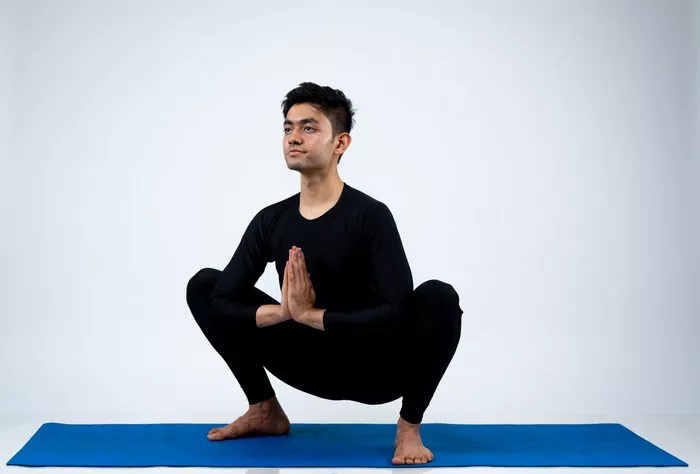Yoga has long been celebrated for its holistic benefits to physical and mental well-being. From improving flexibility to reducing stress, it’s a powerful practice with a wide range of health advantages. However, a question gaining attention is whether yoga has any effect on hormone levels, particularly estrogen. Estrogen plays a crucial role in various bodily functions, especially for women. This article explores whether practicing yoga can decrease estrogen levels, providing an easy-to-understand yet comprehensive guide.
Understanding Estrogen and Its Role
Estrogen is a primary female sex hormone responsible for regulating the menstrual cycle, maintaining pregnancy, and supporting bone health, among other vital functions. Although it is more prominent in women, men also produce small amounts. Estrogen levels fluctuate naturally due to life stages such as puberty, pregnancy, and menopause, but they can also be affected by lifestyle factors, medications, and health conditions.
There are three main types of estrogen:
- Estradiol (E2): The most common form during reproductive years.
- Estriol (E3): Predominantly present during pregnancy.
- Estrone (E1): The main estrogen after menopause.
Understanding these types is important when evaluating how lifestyle changes, including yoga, may influence estrogen levels.
How Hormones React to Stress
One significant factor influencing estrogen levels is stress. Chronic stress activates the hypothalamic-pituitary-adrenal (HPA) axis, resulting in increased cortisol production. Elevated cortisol can interfere with sex hormone production, leading to hormonal imbalances. Yoga, known for its stress-reducing properties, may indirectly influence estrogen levels by reducing cortisol.
When cortisol is high, it can suppress gonadotropin-releasing hormone (GnRH), which in turn affects luteinizing hormone (LH) and follicle-stimulating hormone (FSH) levels, both of which are crucial for estrogen production. Therefore, any practice that helps manage stress, such as yoga, may help rebalance the hormonal system.
The Link Between Yoga and Hormonal Balance
Scientific studies have shown that yoga can influence hormone levels, though the changes are often modest and depend on the intensity and duration of practice. Yoga can contribute to overall hormonal balance through:
- Stress Reduction: Lowering cortisol helps stabilize estrogen.
- Improved Sleep: Better rest supports hormone regulation.
- Weight Management: Maintaining a healthy weight helps keep estrogen levels in check.
Several types of yoga, including Hatha, Vinyasa, and Restorative, have been associated with reduced stress and anxiety, both of which play roles in hormonal regulation.
Can Yoga Decrease Estrogen?
While yoga does not directly target estrogen reduction, it may contribute to lower estrogen levels through indirect mechanisms. For example, weight loss and fat reduction from consistent yoga practice can reduce estrogen production since fat tissue contributes to estrogen synthesis, especially in postmenopausal women.
Furthermore, yoga’s capacity to reduce stress and promote overall hormonal harmony may decrease estrogen if levels are abnormally high. This is particularly relevant in conditions like estrogen dominance, where there is an imbalance between estrogen and progesterone.
However, it’s important to note:
- Yoga is not a substitute for medical treatment.
- Effects vary by individual.
- Long-term commitment is essential for noticeable results.
Scientific Studies and Evidence
Research on yoga and its impact on estrogen is limited but growing. Some studies have shown modest reductions in estrogen among women practicing yoga regularly. For instance:
- A study published in the Journal of Clinical Oncology found that yoga reduced fatigue and inflammation in breast cancer survivors, which are often linked to hormonal changes.
- Another study in Complementary Therapies in Medicine noted lower salivary cortisol and improved hormonal balance in women practicing yoga over 12 weeks.
- A small-scale study in Endocrine Regulations suggested a potential decrease in estrogen levels after consistent yoga sessions, particularly among overweight women.
These studies are promising but not conclusive. More rigorous, large-scale trials are needed to firmly establish yoga’s role in modulating estrogen levels.
Types of Yoga and Their Impact
Different styles of yoga may have varying impacts on estrogen and overall hormonal health. Here’s a brief overview:
- Restorative Yoga: Focuses on relaxation and breathwork. Highly effective in reducing cortisol and aiding hormonal balance.
- Hatha Yoga: Combines physical postures with breathing techniques. Beneficial for stress management and general well-being.
- Vinyasa Yoga: A more dynamic form that can aid in weight loss and cardiovascular health, potentially affecting estrogen levels indirectly.
- Bikram/Hot Yoga: Intensive and sweat-inducing, which may aid in detoxification and weight control.
Benefits Specific to Women
- Improved menstrual regularity
- Reduced symptoms of PMS and menopause
- Balanced estrogen-progesterone ratio
By integrating these practices into a weekly routine, many women experience improved overall health and hormonal stability.
Other Lifestyle Factors That Affect Estrogen
In addition to yoga, several other lifestyle factors can influence estrogen levels. For a more comprehensive approach, consider the following:
- Diet: A balanced diet rich in fiber, phytoestrogens (like flaxseed), and cruciferous vegetables (like broccoli and kale) can help manage estrogen levels.
- Exercise: Cardiovascular activities like walking or swimming complement yoga in hormone regulation.
- Sleep Hygiene: Quality sleep supports the endocrine system.
- Avoiding Toxins: Limiting exposure to xenoestrogens (synthetic compounds that mimic estrogen) found in plastics and certain cosmetics.
Combining yoga with these lifestyle changes amplifies its potential benefits on hormonal health.
Potential Risks and Considerations
While yoga is generally safe, it’s essential to approach it mindfully, especially when targeting hormone levels. Consider the following:
- Medical Supervision: Those with hormonal disorders should consult healthcare providers before starting a new routine.
- Consistency: Sporadic practice yields minimal effects.
- Overexertion: Intense forms of yoga without proper guidance may increase cortisol temporarily.
Being aware of these risks ensures a safer, more effective integration of yoga into your lifestyle.
Practical Yoga Routine for Hormonal Balance
Here’s a basic weekly yoga plan aimed at promoting hormonal health:
Day 1: Hatha Yoga – 45 minutes
Day 2: Restorative Yoga – 30 minutes
Day 3: Vinyasa Flow – 60 minutes
Day 4: Rest Day or Light Walking
Day 5: Hatha Yoga – 45 minutes
Day 6: Restorative Yoga + Meditation – 40 minutes
Day 7: Gentle Flow Yoga – 45 minutes
Include pranayama (breath control) and meditation 3–5 times per week for added hormonal benefits.
Conclusion
Yoga does not directly decrease estrogen but may influence its levels through various indirect mechanisms such as stress reduction, weight management, and improved sleep. By contributing to overall hormonal balance, yoga can be a supportive tool in managing conditions linked to high estrogen levels. While not a standalone treatment, it is a valuable component of a holistic health plan.
FAQs
Q1: Can yoga alone balance my hormones?
Yoga can support hormonal balance, but it’s most effective when combined with proper diet, sleep, and medical care when needed.
Q2: Is there a specific yoga pose that reduces estrogen?
No single pose reduces estrogen directly, but restorative poses like Supta Baddha Konasana and forward folds can help reduce stress, indirectly supporting hormonal balance.
Q3: How often should I practice yoga to notice hormonal changes?
Practicing yoga at least 3–5 times per week consistently over several months can yield noticeable benefits.
Q4: Can men benefit hormonally from yoga?
Yes, yoga can help regulate testosterone and reduce stress in men, contributing to overall hormonal balance.
Q5: Are there any side effects of doing yoga for hormone regulation?
Yoga is generally safe, but overexertion or improper technique may lead to fatigue or injury. Beginners should seek guidance to avoid complications.
Q6: What other activities complement yoga for hormone health?
Balanced diet, regular cardio exercise, quality sleep, and reducing exposure to environmental toxins are excellent complementary practices.












